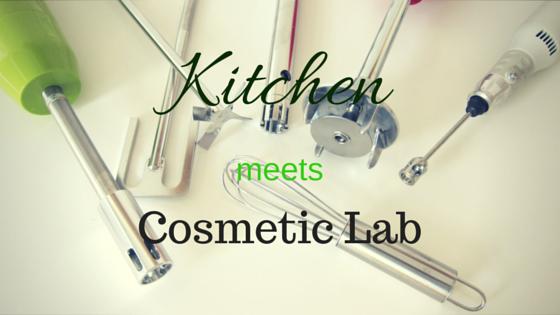Hi guys,
I have promised a couple of months ago to compare a few laboratory mixers and kitchen mixers and inform you about the results.
As the first test, I decided to disperse a gum in water. This is one of the most trifling activities, even with high shear laboratory mixers. I decided to use Xanthan gum, because it is one of the most widely applied gums in the cosmetic lab. And I dispersed 2% xanthan which is much higher than the usual application dosage.
All samples have the same basic formulation: 2% xanthan gum was dispersed in cold water. After dispersion, the blend was put in water bath (70 C) for about half an hour, was shortly blended (with a spatula) and after the mixture was cooled down the pH was adjusted to 5-5,5 and the preservative was added.
For this test I've applied an IKA Eurostar laboratory mixer with a propeller blade. We assign names to our laboratory instruments and this guy is called Freddie. The sample made with Freddie is called sample 1 (you'll see it later in the photos)
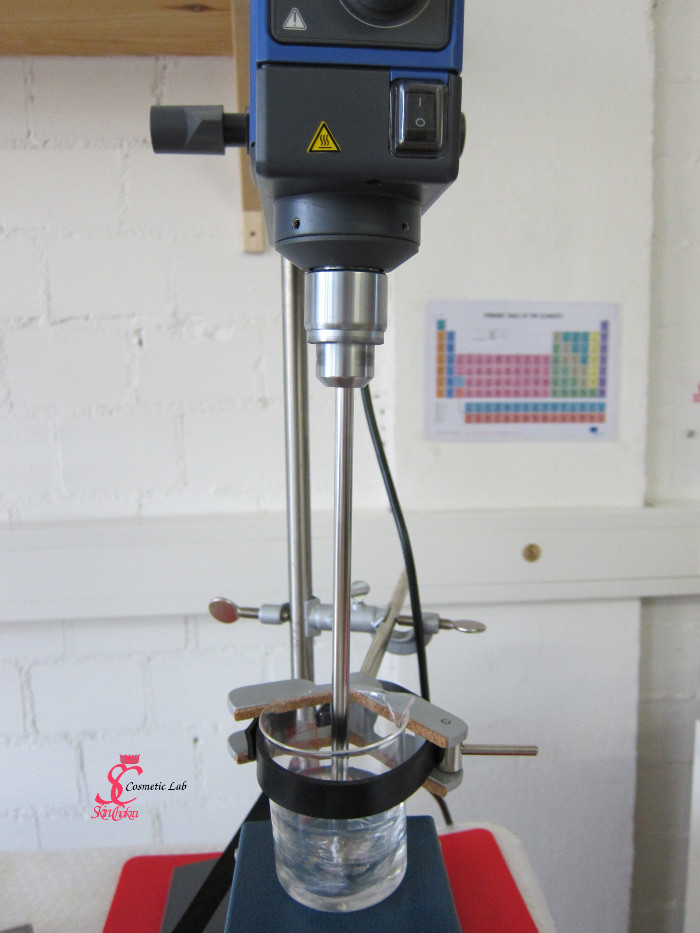
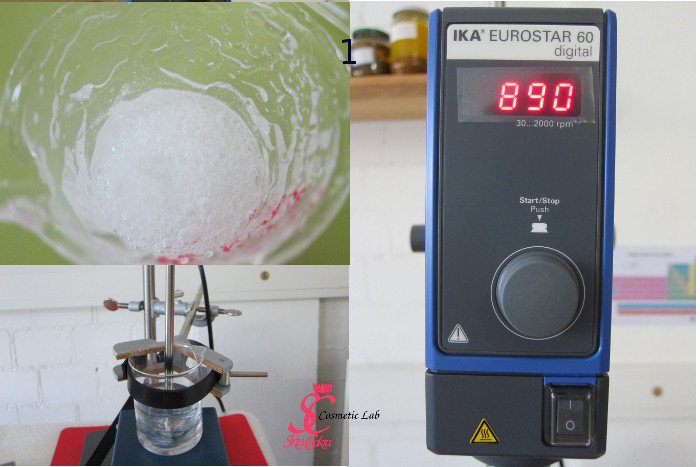
This is a very useful laboratory instrument but probably not on your high-priority list. It's biggest advantage over your usual kitchen mixers and blenders is that it is an overhead mixer and you can apply it for hours and hours without having to hold it in your hand. The speed is adjustable (another advantage over kitchen mixers) and you can change the blades depending on your requirements.
For the second test, I applied a very nice and affordable small mixer which we call Jeremy.
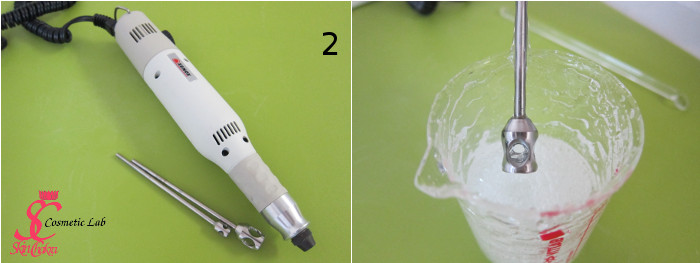 This is a hand held mini-mixer with variable speed and two stirring blades. It is quite light and is an excellent tool for small volumes. It's a little bit vigorous and produces foam (specially of you're working with foaming surfactants) but is really a very useful instrument in our everyday laboratory practice.
This is a hand held mini-mixer with variable speed and two stirring blades. It is quite light and is an excellent tool for small volumes. It's a little bit vigorous and produces foam (specially of you're working with foaming surfactants) but is really a very useful instrument in our everyday laboratory practice.

These are the next mixers we've used for gum dispersion. The left one is a kai blendia mixer (we call her Yvona) and the right one is a Bamix mixer (Magdalena). Both of them are 200 W.
They come with various accessories. You can grind your pigments and herbs, make emulsions, disperse gums, make rice milk and run almost every necessary task in a cosmetic lab with any of them. They are slightly different in accesories. I came to Kai Blendia via my dear friend Heike Käser from Olionatura and to Bamix via another dear friend Gerlinde from Gerlinde naturals. Both instruments have proved to be effective in practice (for small volumes). Both mixers are hand held. It means you can use them in intervals but probably not continuously (unless you want a simultaneous arm muscle training).
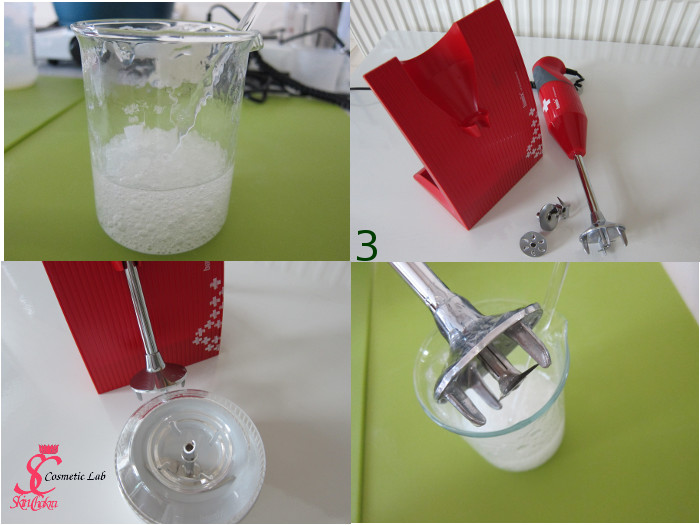
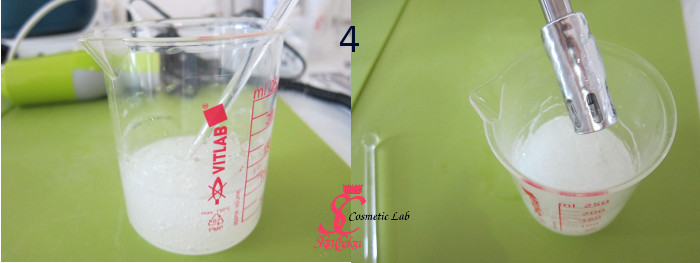
 We have used two different blending heads of Blendia and one head of Bamix.
We have used two different blending heads of Blendia and one head of Bamix.
Now we have 5 samples to compare. All instruments created foam and because of the high viscosity of the blend, the foam remains rather fixed in the gel.
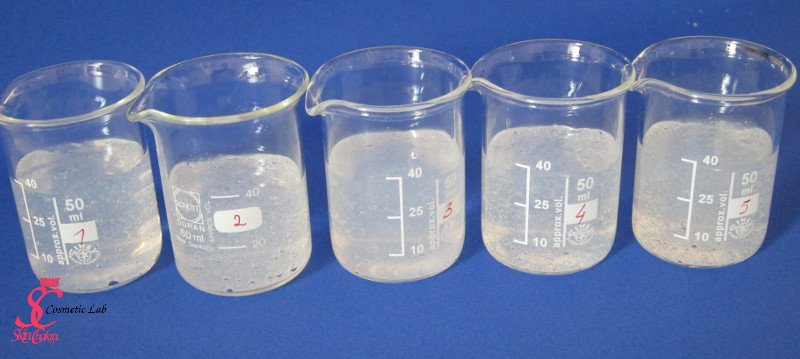
Here you see all samples together. From left to right:
1- IKA overhead stirrer
2- the mini-mixer
3- Bamix
4- Kai (with emulsifier head)
5- Kai (with masher head)
The samples are visually very similar. The viscosity was very similar for all of them.
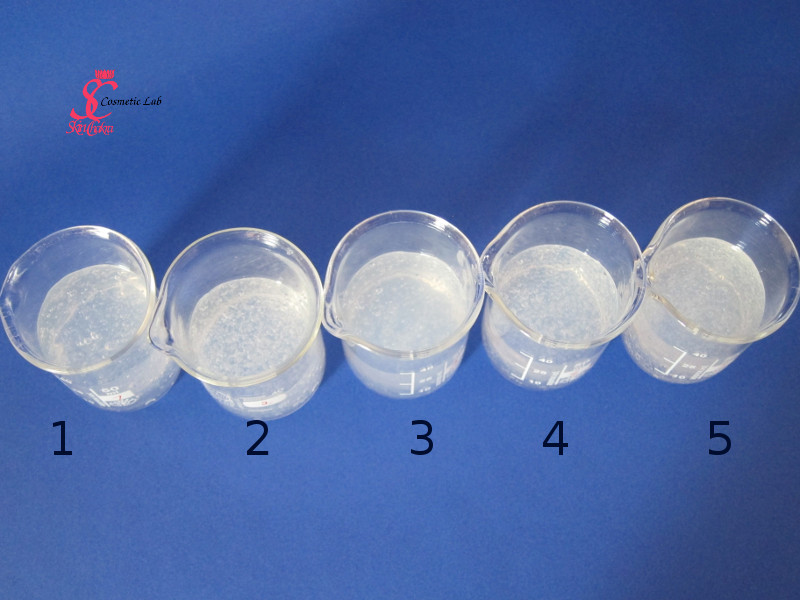 This is the top view of the same samples again.
This is the top view of the same samples again.
Conclusion:
The overhead stirrer is easier to work with for higher volumes and longer periods. It can be operated continuously for several hours. With hand blenders, you have to work in intervals. You can work alone with the overhead stirrer whereas you'll need a buddy to help you (at least by gum dispersion) as you work with hand mixers. All samples are visually very similar and the viscosity of the blends are very similar as well.
For small volumes don't worry at all if you don't have any overhead mixers. You can use any of the above mentioned hand mixers as a substitute.
Don't hesitate to send me your comments and questions.
BeHappy and have fun
